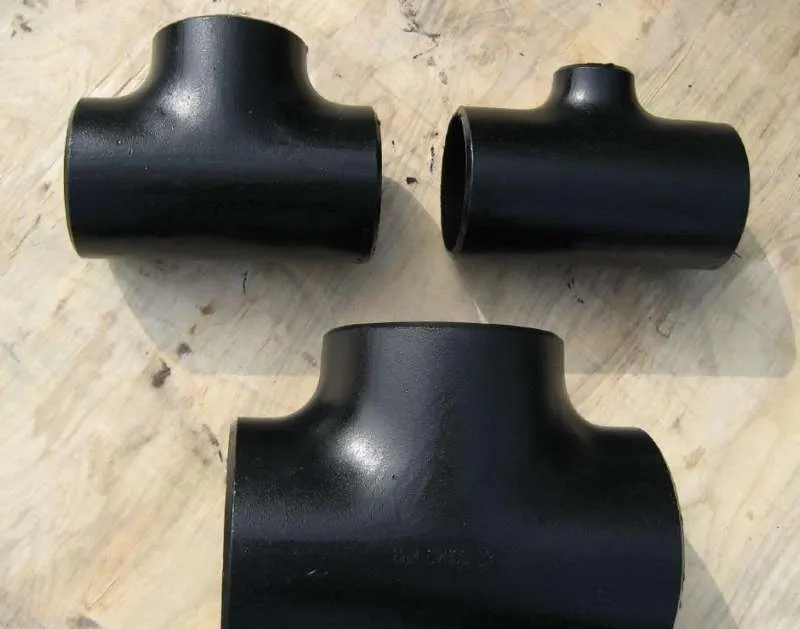-
Cangzhou Yulong Steel Co., Ltd.
-
Phone:
+86 13303177267 -
Email:
admin@ylsteelfittings.com
- English
- Arabic
- Italian
- Spanish
- Portuguese
- German
- kazakh
- Persian
- Greek
- French
- Russian
- Polish
- Thai
- Indonesian
- Vietnamese
- Zulu
- Korean
- Uzbek
- Hindi
- Serbian
- Malay
- Ukrainian
- Gujarati
- Haitian Creole
- hausa
- hawaiian
- Hebrew
- Miao
- Hungarian
- Icelandic
- igbo
- irish
- Japanese
- Javanese
- Kannada
- Khmer
- Rwandese
- Afrikaans
- Albanian
- Amharic
- Armenian
- Azerbaijani
- Basque
- Belarusian
- Bengali
- Bosnian
- Bulgarian
- Catalan
- Cebuano
- China
- China (Taiwan)
- Corsican
- Croatian
- Czech
- Danish
- Esperanto
- Estonian
- Finnish
- Frisian
- Galician
- Georgian
- Kurdish
- Kyrgyz
- Lao
- Latin
- Latvian
- Lithuanian
- Luxembourgish
- Macedonian
- Malgashi
- Malayalam
- Maltese
- Maori
- Marathi
- Mongolian
- Myanmar
- Nepali
- Norwegian
- Norwegian
- Occitan
- Pashto
- Dutch
- Punjabi
- Romanian
- Samoan
- Scottish Gaelic
- Sesotho
- Shona
- Sindhi
- Sinhala
- Slovak
- Slovenian
- Somali
- Sundanese
- Swahili
- Swedish
- Tagalog
- Tajik
- Tamil
- Tatar
- Telugu
- Turkish
- Turkmen
- Urdu
- Uighur
- Welsh
- Bantu
- Yiddish
- Yoruba

Dec . 04, 2024 10:08 Back to list
Exploring Flange Design and Applications for Enhanced Structural Integrity in Engineering
Understanding Flanges The Significance of Flange 40
Flanges are integral components in various engineering applications, playing a crucial role in connecting pipes, valves, and other equipment in piping systems. Among the wide range of flanges available, the term Flange 40 often arises in discussions involving engineering specifications, particularly in contexts where specific pressure ratings and dimensions are critical. This article aims to explore the concept of Flange 40, its applications, specifications, and significance in modern engineering.
What is Flange 40?
Flange 40 generally refers to a specific type of flange classified by its pressure rating, dimensional standards, and intended applications. The 40 in its designation typically indicates a pressure class, which can be associated with a nominal pressure rating, often defined by the American National Standards Institute (ANSI) or the American Society of Mechanical Engineers (ASME). In this context, Flange 40 often suggests suitability for medium pressure applications, accommodating operating pressures up to 40 bar (approximately 580 psi).
Key Specifications
Flanges are characterized by several critical specifications, including material, diameter, thickness, and type of connection (welded, bolted, or threaded). Flange 40 may conform to various standards such as ANSI/ASME B16.5 for flanges and fittings. These standards outline the detailed dimensions and tolerances that ensure compatibility and integrity in various industrial applications.
A typical Flange 40 may feature a certain outer diameter (OD) while adhering to specific thickness requirements to withstand designated stress levels. For example, the dimensions of a Flange 40 might vary depending on its nominal pipe size (NPS), which dictates the size of the pipe it is designed to join. When selecting a Flange 40, it is essential to consider factors like the material used – common materials include carbon steel, stainless steel, and alloy steel – as these significantly impact the flange's performance under different temperature and pressure conditions.
Applications of Flange 40
flange 40

Flange 40 finds broad applications across various industries, including oil and gas, chemical processing, water treatment, and power generation. In the oil and gas sector, Flange 40 can be used in pipelines transporting hydrocarbons, where maintaining integrity under high pressure is crucial. In water treatment facilities, Flange 40 may be employed to connect various components of the treatment system, ensuring proper flow and structural integrity.
The versatility of Flange 40 allows it to perform reliably under various environmental conditions, making it a preferred choice for applications that demand robust performance. Furthermore, its adherence to industry standards ensures that it can be easily integrated into existing systems, facilitating easy maintenance and replacement.
Importance of Material and Manufacturing Quality
The performance of a Flange 40 is influenced significantly by the quality of materials used in its manufacture. High-quality flanges are typically subjected to rigorous quality control processes to prevent defects such as poor welding or inadequate thickness, which could lead to failures under pressure. Therefore, choosing flanges from reputable manufacturers with established quality assurance practices is vital in ensuring longevity and reliability in service.
Moreover, when specifying Flange 40 for a particular application, it is crucial to consider factors such as corrosion resistance, especially in environments with aggressive media or elevated temperatures. Utilizing the appropriate material properties can significantly enhance the performance and lifespan of the flange.
Conclusion
Flange 40 serves as a vital component in many industrial applications, ensuring secure connections in piping systems while maintaining the integrity and safety of various operations. Understanding its specifications, applications, and the importance of material quality enables engineers and technicians to make informed decisions when selecting the appropriate flanges for their projects. As industries continue to evolve and demand more efficient solutions, the significance of reliable components like Flange 40 remains paramount in achieving operational excellence. By prioritizing quality and standards, organizations can ensure the stability and safety of their piping systems, ultimately supporting the broader goals of efficiency and sustainability in engineering practices.
Latest news
-
ANSI 150P SS304 SO FLANGE
NewsFeb.14,2025
-
ASTM A333GR6 STEEL PIPE
NewsJan.20,2025
-
ANSI B16.5 WELDING NECK FLANGE
NewsJan.15,2026
-
ANSI B16.5 SLIP-ON FLANGE
NewsApr.19,2024
-
SABS 1123 FLANGE
NewsJan.15,2025
-
DIN86044 PLATE FLANGE
NewsApr.19,2024
-
DIN2527 BLIND FLANGE
NewsApr.12,2024
-
JIS B2311 Butt-Welding Fittings LR/SR 45°/90° /180°Seamless/Weld
NewsApr.23,2024











